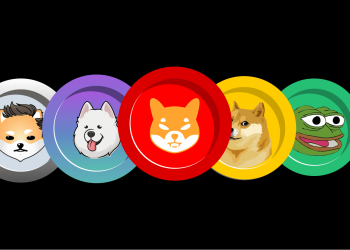Touch trading is a term that describes an approach where the trader enters the market at the point of impact of live price with a point of interest. In most cases, they enter at the resistance level and horizontal support. Many pros and cons come with using this trading strategy.
Advantages
One of the main advantages of this strategy is getting in at the source. Despite the guarantee that is associated with market predictability while waiting for price action confirmation, a considerable benefit comes with the ability to get in at the source.
It is noted as the most considerable advantage of the touch trading approach. The ability to get in at the source manages to unlock the door for an earlier entry and possibly translates to a bigger profit margin.
The second advantage is the availability of extra trade setups. It is not surprising that touch trading comes with more trading benefits than the conformist cautious strategy. Avoiding the use of price action confirmations can get rid of the additional filters. Thus, whatever remains behind is a more elastic and adaptive trading method that generates more trading prospects.
Most of the investors can barely change between a conventional and an aggressive trading strategy. Within this network, it translates to touch trading that does not favor every investor. Some of the investors favor piling lots of odds in preference of a trading prospect since they can and cannot depend on hit-or-miss methods that mostly depend on huge sample sizes to showcase their value.
The third advantage that comes with touch trading is tighter trade management. The concept behind this form of trading is the ability to quickly amend in case you find yourself swimming against the market wave. That is logical since trading at the source enables investors to reasonably expect the market to counter at the interest point.
Thus, the investor can quickly bail out to stop the loss whenever the market does not respond as expected. With regards to trade management technique, it leads normally into floating stop loss or some tight fixed placements that depend on the market’s steep reversal of the considerable support.
A tighter stop can result in a surge in the risk to reward ratio. Also, getting in early at the source brings in the extra benefit of growing some possible profit. On the flip side, conventional price action trading strategies mainly demand more comprehensive stop loss placements since an entry pushes away from the origin has to integrate the possibility of a harmless pullback against the supposed direction.
Extra trading prospects and more considerable profit possibility instinctively seem to be a great plan until it gets flipped. Nonetheless, some demerits come with a touch trading strategy.
The Shortcomings
A lower hit rate is one of the common shortcomings associated with touch trading. This demerit is possibly the biggest to consider in the journey to embrace the touch trading technique. The incremented trading chances rarely come with the assurance of an astronomical hit rate as well.
Whereas a touch trading strategy introduces more trading prospects, the aggressive method seems to necessitate higher trade-to-trade risk that translates into reduced hit rate profits when compared to those of a conventional pragmatic trader who likes waiting for the explicit price action approvals.
Theoretically, one may think that blending the lower trading frequency with a higher hit rate would essentially equal a method that integrates a lower hit rate but higher trading frequency. Nevertheless, in reality, it is not that easy. But that is attributed to individual trading personalities that differ considerably from one investor to the next.
This method is also not for novice traders. Touch trading is common for experienced traders. However, the new traders have pulled away from touch trading since it is aggressive and subjective. To become a successful touch trader, it is important to be properly knowledgeable about the market and price action.
The comprehension is deeper than highlighting some of the fundamental support and placing or restricting orders. It needs lots of knowledge, but one can work around this by learning how pivot levels indicator operated through many courses that you can get online.
Although touch trading is mostly labeled ‘blind’, there is nothing an investor can do with their eyes closed to bring them success. The possible trades mostly demand deep concentration and a lot of “babysitting” through the entire first phase.
Interestingly, the aggressive nature of the touch trading method is beneficial on most fronts but also has its Achilles heel. Emotional stability when trading is important and mostly a pursuit for most new traders. A subjective trading method that depends on a quick response to the market’s performance is challenging for some of the traders to handle.
The Takeaway
Touch trading is not a pot of gold or a cataclysmic event. How these trades turn out is primarily dependent on the trader’s experience, personality, and comfort zones. With all these merits and demerits, traders are advised to do thorough background checks to determine which trading strategies work best for them.











